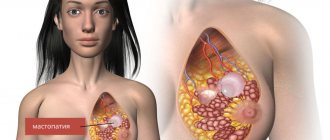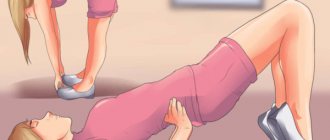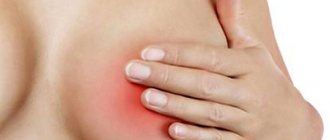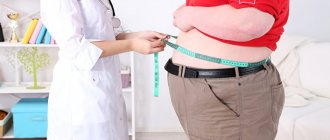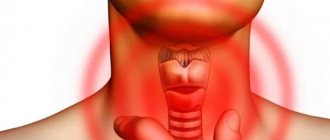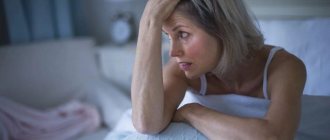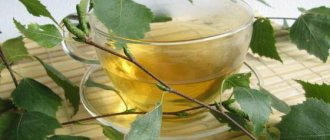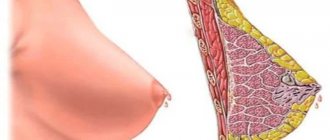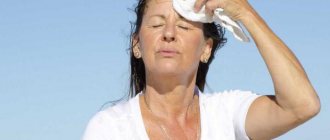Mastopathy is the most common breast disease that is diagnosed in women of different ages.
But the peak of the disease occurs after 40 years of age.
Of the total percentage of breast diseases, mastopathy in young women makes up 40%, but in women with a history of gynecological diseases, pathology is diagnosed in 90% of cases.
This is why doctors so strongly advise all women to undergo a preventive examination with a mammologist once a year.
And women after 40 years of age are recommended to do this twice a year.
What is mastopathy
Mastopathy is a pathological change in breast tissue that is fibrocystic in nature . In the mammary gland, fine-grained compactions form, which can be painful on palpation.
IMPORTANT!
Despite the fact that mastopathy is a benign neoplasm, doctors talk about a risk factor for the degeneration of a benign pathology into a malignant one. Moreover, this risk increases with age.
Mastopathy is a collective term that unites a large group of pathologies. In essence, these are all disorders in the mammary gland that are associated with an imbalance between epithelial and connective tissue.
The development of the disease is closely related to neurohumoral regulation.
Everyone knows that hormones are responsible for the development and growth of the mammary glands, especially prolactin, estrogen, progesterone and growth hormone. The ratio of these hormonal units directly affects the health of a woman’s mammary gland.
When hormones are imbalanced, the risk of mastopathy increases. This explains the peak of pathology after 40 years. At this age, a woman’s body is reconstructed in preparation for the menopause, therefore, the hormonal background undergoes changes.
How to eliminate pain
According to statistics, every third woman suffers from a diffuse form of mastopathy, and most often the disease does not require special treatment. In general, women are advised to follow a low-calorie diet and maintain a healthy lifestyle.
- Doctors advise avoiding fatty and sweet foods, as well as caffeine and alcohol.
- Instead, you should eat dairy products, fresh fruits and vegetables, lean steamed meats, and fish.
This diet brings hormonal levels back to normal, and therefore eliminates the symptoms of mastopathy. In combination with a healthy diet, you can use other treatment methods to relieve pain and reduce swelling of the mammary glands:
- hormone therapy;
- taking painkillers;
- herbal medicine;
- taking nutritional supplements;
- traditional methods.
What are the features of pathology after 50 years?
A woman approaches 50 with certain baggage. This baggage contains everything that her reproductive system has experienced over the years. And since everything that concerns the reproductive system is somehow reflected in the condition of the mammary glands, it is during this period, as they say, “all the sores come out.”
In addition, hormonal changes in a woman’s body after 50 years also leave their mark on the condition of the mammary glands. Adipose tissue is replaced by connective tissue - this is mastopathy.
Most often, fibrocystic mastopathy develops during menopause. This form of pathology not only gives a woman discomfort, but can also cause the development of oncological processes in the mammary gland.
Some women do not take the manifestations of mastopathy seriously enough, mistaking them for symptoms of menopause and letting the disease take its course. But there is another category of representatives of the fair sex, who with their fears and worries aggravate the situation, and the disease actively progresses.
Expert opinion
Shustova Olga Leonidovna
Obstetrician-gynecologist of the highest category
Women after 50 years of age may think that all openings relating to the reproductive system and mammary glands no longer have anything to do with them. With the onset of menopause, of course, the functionality of the reproductive organs fades, but at the same time the protective function of the body weakens, which leads to the appearance of various diseases. Moreover, upon the onset of menopause, the mammary gland changes its tissue composition, and this does not always go smoothly. If we add to this the surges in hormones, then ideal conditions are created for the development of mastopathy. Therefore, being on the eve of menopause, or already experiencing all the menopausal changes in the body, a woman should carefully monitor the condition of the mammary glands.
The importance of self-examination
Regular self-examination of the breast is of great importance, especially for women over 35. Particular attention should be paid to those whose close relatives have a history of breast cancer.
Self-examination should be done after your period ends. It is at this time that the symptoms of the pathology are most pronounced.
How to do:
- In a lying position: visually divide each gland into 4 parts - lateral, upper and lower, carefully palpate each of them with your fingers for seals.
- While standing in front of a mirror: raise your hands up, examine the contour of the glands and nipples, pull each nipple and make sure there is no discharge.
Initial signs of the development of pathology may be compactions, the appearance of incomprehensible folds on the skin of the breast, depressions on the surface of the glands, pain, changes in the color or normal shape of the nipples, as well as the presence of discharge.
Why does breast pain occur after menstruation? Read the article about the causes of pain, possible pregnancy, hormonal imbalance, gynecological diseases, and the need to see a doctor.
Why don't I get my period? The reasons for the possible delay are in this article.
Associated symptoms
The clinical picture of mastopathy after 50 years is as follows:
- the mammary glands become painful, and this soreness may intensify with the growth of tumors in the breast;
- The mammary glands swell, and upon independent palpation, compactions can be detected in them. If you examine both breasts in detail, you notice their asymmetry;
- the skin changes - tuberosity appears;
- Discharge can be observed from the nipples. In some cases, the nipples become sunken - this happens during transformation into a malignant formation or during an inflammatory process;
- As for a woman’s well-being, it, as a rule, does not change. But if mastopathy becomes complicated, secondary signs appear, and then diagnosis becomes difficult.
NOTE!
In general, the clinical picture of mastopathy after 50 years is no different from the development of the disease at an earlier age. However, age-related changes can either dull the signs of the disease or exacerbate them.
Clinical picture of the disease
The main symptom of mastopathy is severe chest pain. It can have different manifestations, but in any case, in addition to pain, the disease is accompanied by other symptoms.
With the diffuse fibrocystic form, a woman’s breasts swell and increase in size. Swelling of the tissues is accompanied by pain and the release of specific fluid from the nipples.
Also, when palpating the chest, some lumps can be detected. Sometimes they can reach the size of even a chicken egg. But this is quite serious and requires some treatment in a hospital. Mostly, lumps and cysts are small in size, but can be easily felt when touched.
You may also be interested in an article on how to use Aevit for mastopathy.
Read an article about how to make compresses for mastopathy here.
At the first stage of the development of the disease, severe symptoms of the disease appear only in the premenstrual period. Then the pain and other signs of the disease subside.
This is why many women do not go to the clinic, considering such symptoms to be just a minor change associated with the menstrual cycle. But in the future, the pain only intensifies, the chest swells, and the resulting lumps increase in size, causing a feeling of heaviness in the chest.
Causes
As for the reasons for the development of mastopathy in women after 50 years of age, they are quite diverse.
Of course, the main role in the development of the pathological process is played by the extinction of reproductive function. The protective function of the body weakens, and various pathologies may develop; women who experience almenorrhea or pronounced premenstrual syndrome during the premenopausal period are especially at risk of developing mastopathy.
During menopause, the activity of the thyroid gland decreases, and blood circulation also worsens.
In addition, during this period, chronic pathologies of the liver and reproductive organs may worsen - myomatous formations, endometrial hyperplasia, etc.
All this contributes to the development of pathological processes in the mammary gland.
Additionally, the following reasons can provoke mastopathy:
- excess weight;
- chronic viral and bacterial infections;
- chest injuries and bruises;
- long-term stressful situations.
What types are most often observed?
Mastopathy has two main forms:
- diffuse. The connective tissue grows and small nodular neoplasms form. This form, in turn, is divided into fibrous, cystic or fibrocystic mastopathy;
- nodal In this case, large nodular formations are formed in the tissues of the gland, which can reach the size of a walnut. This form is more dangerous, so you need to urgently consult a doctor while it is possible to cure the pathology without resorting to surgery.
Most often, after 50 years, women are diagnosed with fibrocystic mastopathy, but the nodular form of the disease is far from uncommon.
Questions and answers on: pain with fibrocystic mastopathy
Hello, please tell me what I should do with my bouquet. I am 38 years old, two children. one abortion. During the 3rd pregnancy (2nd birth) in 2004, a thyroid nodule measuring 23*14mm with TSH-1.6 was discovered. no antibodies detected. Node growth by year on one ultrasound machine: year Right lobe cm.3 Left lobe cm.3 Nodule 2007 8.7 6.3 16.2-19.2 2008 12.5 6.3 up to 19 mm in diameter 2009 12.8 6 .4 20-22mm 2010 13.3 6.3 20.6-22 2011 15.5 6.6 24-24 2012 16.3 6.7 26.8-28.2
The capsule is compacted. The contour is wavy and clear. The structure is diffusely heterogeneous, fine-grained. In the right lobe there is a node with a hypoechoic contour, inside the node there is a single calcification and hypo-anechoic content is determined in the center of the node. The general echogenicity of the gland is increased. Biopsy on January 25, 2011: scanty colloid is noted in the preparation; thyroid epithelium in a state of proliferation. Latest blood data from 01/12/11 TSH-2.1, AT to TPO-855.0. Weight 105 kg, a third more. normal. I myself take L-thyroxine 100, although the endocrinologist at the Regional Center canceled it and wrote that she does not need hormones. therapy and told me to remove the node. After the biopsy, the surgeon said that if it doesn’t interfere, then you don’t have to cut it. From the age of 20 to this day I have had fibrocystic mastopathy. In February 2012 Did an ultrasound of the pelvis: Uterine fibroids dimensions: length - 73 mm, anterior-posterior size - 55 mm, transverse - 63 mm, correct shape, smooth contours, homogeneous myometrial structure. Sered. M-echo 12.7 mm, not expanded, clear, homogeneous. OS - size 34 mm-15-16, not enlarged, the contours are smooth, clear, the structure is heterogeneous. Contains small liquid inclusions. OD- 30-12-15. all the same. Gynecologist's conclusion: uterine fibroids, signs of adnexitis on the left. Bacteriologist. examination: colpitis, no infections according to tank culture. According to cytomorphological examination: Weak dysplasia of the cylinder. epithelium, squamous epithelial cells of the upper layer + moderate hyperkeratosis, changes characteristic of herpes infection. Ureoplasma and mycoplasma were detected in a titer greater than 104. Sensitive according to the antibiogram. only to ofloxacin. Cervicitis and erosion were not considered in question the first time. The Odessa gynecologist did not see the erosion. Appointment of a gynecologist in Odessa: Alfarekin for 1 million IM - No. 10; douching with dekasan No. 10; Vagikal suppositories, le-crane, myoma drops. Our B-Dniester gynecologist, against prescriptions, says it is unknown how it will affect the thyroid gland, go to Kyiv, cure the thyroid gland, problems with gynecology will disappear. In addition, I have a 12-point ulcer, duodenitis, chronic bronchitis, sinusitis, low hemoglobin. I have pain below, it feels like my legs are going away, the temperature is 37 in the evening.. I don’t know what to do, I don’t know who to go to Kyiv ?. Please advise how to relate my illnesses and how to treat them. In Odessa, and especially not in our country, we do not have good specialist endocrinologists and gynecologists. Can I take the prescribed treatment, or what can I replace it with? What to do with the thyroid gland? HELP. PLEASE.
Diffuse fibrocystic mastopathy is a type of mastopathy that has its own characteristics. Most often, the main symptom of this form of manifestation of the disease is tissue proliferation with a predominance of fibrosis.
In addition, one or more benign tumors appear in the breast. They come in different sizes and can be located in one breast or in both mammary glands.
The main symptoms of the disease are pain, the presence of lumps on palpation of the breast, specific discharge from the nipples, and swelling of the tissues. Often the disease changes the shape and size of the breast, which significantly affects the mental and emotional state of the woman.
Severe chest pain due to mastopathy worsens the patient’s quality of life, but in addition, lack of treatment can lead to quite serious complications that threaten the patient’s life. Therefore, under no circumstances should you hesitate to go to the doctor. And if any unpleasant symptoms occur, immediately undergo a full examination in a hospital.
At the same time, depending on certain signs, several main forms of manifestation of the disease are distinguished. This includes:
The cystic form of mastopathy is a disease of the mammary gland, the main symptom of which is the formation of a cyst. It can be either one-sided or two-sided.
The fibrous form is characterized by the growth of the connective tissue of the mammary gland. In this case, accompanying symptoms are severe swelling of the breast, inflammation and pain on palpation.
A characteristic feature of the mixed form of mastopathy is the formation of both tumors and specific compactions in the mammary gland. Moreover, such phenomena are observed precisely in connective tissue. But the glandular form of the disease manifests itself in the form of a significant enlargement of the mammary gland, tissue swelling and severe pain.
Diagnostic methods
During a gynecological examination, the doctor may see signs of menopausal hypoestrogenism, which is a provoking factor for the development of mastopathy. Also, dryness of the mucous membranes of the genital organs or weak pigmentation may indicate the initial stage of development of the disease.
If mastopathy is suspected, a 50-year-old woman is prescribed the following diagnostic measures:
- biochemical and clinical blood test;
- general urine analysis;
- mammography;
- Ultrasound of the mammary glands;
- dopplerography;
- smear cytology of breast discharge;
- biopsy;
- CT and MRI.
Taking medications
Conservative treatment of mastopathy can be carried out with or without hormones.
Hormonal treatment with oral contraceptives can be prescribed during the initial menopause, when the menstrual cycle is still present.
Most often prescribed:
- Regulon;
- Femoston;
- Janine;
- Novinet.
When menopause has already occurred, the following are prescribed:
- Duphaston;
- Utrozhestan;
- Progesterone.
To suppress estrogen synthesis, the following are used:
- Danazol;
- Norgestel;
- Linestrinol;
- Tamoxifen;
- Toremifene.
If prolactin levels are elevated, the following is prescribed:
- Bromocriptine;
- Abergeen;
- Parlodel.
Livial is also indicated for postmenopausal women, which affects sex hormones and androgens.
Non-hormonal treatment consists of taking homeopathic remedies, for example:
- Mastodinon;
- Klimadinon.
They stabilize hormonal levels and relieve menopausal symptoms.
IMPORTANT!
These drugs do not have a pathological effect on tissue growth.
Taking vitamins is a mandatory component of the course of therapy for mastopathy.
Appointed:
- Retinol;
- Ascorbic acid;
- Aevit;
- Tocopherol;
- Folic acid;
- Triovit;
- Pyridoxine.
Vitamins stimulate metabolic processes, normalize hormonal levels and have an antitumor effect.
Creams and ointments
External agents are widely used , for example the following:
- Progestogel;
- Doctor;
- Apilak;
- Mastofit;
- Traumeel S;
- Malavit;
- Indovazin;
- Mamma gel;
- Healthy;
- Troxevasin.
CAREFULLY!
You need to understand that each external remedy for the treatment of mastopathy has indications and contraindications, so independent prescribing of this group of remedies is inappropriate. Only a doctor, based on test results, can choose the optimal cream or ointment.
Surgical intervention
Surgical treatment is prescribed in the following cases:
- nodular mastopathy;
- large cystic cavity in the gland;
- the presence of proliferation in cells;
- suspicion of a malignant process.
As for the surgical method of removing tumors, they use:
- sectoral resection . Part of the affected gland is removed;
- enucleation of a neoplasm . Only the tumor itself is removed;
- radical resection . Complete removal of the mammary gland.
Folk remedies
Folk remedies in the treatment of mastopathy can only be used as additional means.
But before using them, you need to consult a doctor, since when combining traditional and alternative medicine, you need to adjust the dosage of medications.
Traditional medicine offers a lot of recipes, for example the following:
- alcohol tincture of cinquefoil . You can buy it at the pharmacy, take a tablespoon three times a day, diluting it in half a glass of water;
- propolis tincture . Take a teaspoon twice a day, diluted in half a glass of water.
Decoctions and infusions of the following herbs are also used:
- burdock root;
- motherwort;
- series;
- flax seeds, fennel, cumin;
- knotweed;
- potato color;
- hop cones;
- mistletoe;
- calendula;
- Birch buds;
- walnuts;
- aloe;
- red brush;
- yarrow;
- hawthorn and many others.
Treatment of mastopathy with improvised means
Many homemade products and substances can be used to treat mastopathy, if the disease has not reached a serious stage and folk remedies can still help.
Some useful herbs for home treatment grow under your feet. Cabbage is available in any season, and beekeeping products can be bought in special shops or from friends.
Useful home compresses for mastopathy
Cabbage leaf from a fresh vegetable in combination with linden or flower honey is a good tandem for a homemade chest compress when treating mastopathy with home remedies.
- Take a large leaf of a green vegetable, rinse it in warm water and lightly beat it so that there are no hard spots that will create discomfort for the skin.
- Lubricate the surface with warm honey and apply to the sore spot. The cabbage leaf should cover the entire area of compaction or pain in order to enhance the effectiveness of the compress for mastopathy.
- Wrap a warm scarf or scarf around your chest and leave the vegetable medicine overnight. Duration of therapy at home is 2 weeks.
Some traditional medicine recipes for treating mastopathy at home recommend using cabbage leaves as a basis for other compresses when a medicinal mass is applied.
Here is one recipe for such a compress for mastopathy at home:
- Take 1 fresh beetroot and grate it.
- Add liquid honey to the resulting mass in the proportion of 3 parts beets to 1 part honey.
- Mix and place a layer on the cabbage leaf. The mass should be warm, but not burn the skin of the chest.
- Apply a homemade honey-vegetable compress to the area with swelling or pain, tie with a warm cloth or scarf and leave overnight.
During home treatment, the vegetable leaf can be replaced with burdock, but only in fresh form, so that it gives up all its juices for the treatment of mastopathy. A limp plant will not do any good.
- Rinse the burdock, mash it with your hands and apply it to the sore spot.
- You can secure the plant with a bra or fabric bandage.
- Change the burdock leaf as it loses its juiciness and wear it throughout the day or even 24 hours.
Severe pain will subside and swelling will subside. Can be repeated when the first symptoms of mastopathy appear, but only during the period of burdock growth. A dried plant from a pharmacy is ineffective in treating mastopathy with homemade compresses.
Flatbread for mastopathy
An excellent folk remedy for treating mastopathy at home, using traditional medicine recipes. The flatbread is prepared before going to bed and left overnight.
Mix the following ingredients:
- Rye flour about 400 grams.
- Dry herbs (celandine, coltsfoot, wormwood) 30 grams each.
- Grate propolis (30 grams) and melt in a water bath, add to other products.
- Add whey until a lump forms. Apply homemade cake as a folk remedy for the treatment of mastopathy to the sore breast. A folk remedy at home relieves swelling well, the lump dissolves, and the breasts become softer.
For home treatment of mastopathy, use an ointment based on bee products, for example, propolis. Homemade ointment as a folk remedy is prepared in advance and stored in the refrigerator.
- Melt 30 grams of propolis and 100 grams of any interior lard (pork, badger, bear) in a water bath. The process takes about 2 hours with constant stirring of the mass.
- Strain the liquid through a sieve.
- Cool, transfer to a glass container and spread a thin layer on the chest.
Honey and Kalanchoe
Beekeeping products with plant juice are useful to take orally for mastopathy, if treatment is carried out at home. Effectively for oral administration, mix Kalanchoe juice with honey.
- Wash the fresh leaves of the plant and grind in a blender to a paste. Mix the mixture with liquid honey, maintaining a 1:1 ratio, transfer to a glass container and put in the refrigerator.
- Take 1 tbsp Kalanchoe with honey. l. /3 c. d. for two weeks.
It is effective in detecting small nodules on the chest, which resolve well if the mass is used together with compresses.
Salt to help with mastopathy
In folk medicine, there are many recipes for homemade salt-based compresses. Salt is also effective in treating mastopathy in women at home. A salt compress relieves pain and reduces engorgement of the mammary glands.
- For the compress, measure 3 tablespoons of iodized or regular salt into a container.
- Pour one liter of boiled water, cooled to 37 degrees.
- Soak a cotton cloth in the liquid and apply it to the sore breast.
- Mastopathy is treated with a home compress for 14 days.
Repeat the course at home after 10 days if the signs of mastopathy have not completely disappeared.
Scheme of the most effective treatment
There is no single treatment regimen for mastopathy. Treatment is prescribed in accordance with test results.
It is important not only to choose the right medicine, but also to correctly determine its dosage. An error can lead to the progression of the disease, the degeneration of a benign process, as well as an increase in menopausal symptoms.
As a rule, complex treatment is more effective, which uses hormonal medications prescribed by a doctor, topical medications, and folk remedies. But in any case, mastopathy therapy is selected on an individual basis.
Preventive measures
Preventive measures are as follows:
- regular breast self-examination;
- wearing a bra made from natural fabrics;
- rejection of bad habits;
- timely elimination of chronic and inflammatory diseases;
- avoiding ultraviolet radiation;
- minimizing stress;
- proper nutrition.
NOTE!
Some women sleep on their stomachs. If the position changes during sleep, then there is nothing to worry about, but constant sleep on the stomach can worsen the trophism of the gland tissue, which will provoke the development of various pathologies.
Prevention of neoplasms and mastopathy
To prevent diseases, a woman should regularly see a mammologist so that she can detect the onset of mastopathy in time. You should also evaluate your health status and visit a doctor when necessary. To prevent illness it is also important:
- visit a gynecologist 1-2 times a year;
- eat well;
- if diseases of the genitourinary and nervous system are detected, treatment must be started;
- playing sports helps prevent any disease;
- Once a month you need to monitor the condition of your breasts;
- you should give up bad habits.
If a woman follows the doctor’s recommendations, it is quite possible to prevent a relapse.
